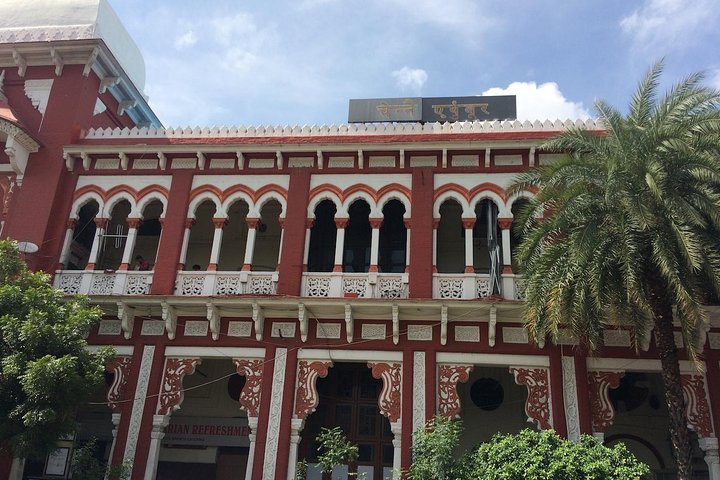Exploring Chennai’s Colonial Legacy: A Walk Through British Architecture
Intrigued by Chennai’s colonial past, I embarked on the British Architecture Walk to explore the city’s iconic landmarks. Join me as I delve into the architectural wonders and cultural tapestry of this vibrant city.
A Journey Through Time: The British Architecture Walk in Chennai
Chennai, a city that seamlessly blends the old with the new, offers a unique opportunity to explore its rich colonial past through the British Architecture Walk. As someone who has always been fascinated by the intricate dance of cultures, I was eager to delve into the architectural wonders that this city had to offer. The walk promised not only a glimpse into the British influence on Chennai’s skyline but also a deeper understanding of the city’s evolving identity.
Upon arrival, I was greeted by Preethi, a young and enthusiastic guide whose passion for architecture was infectious. Her knowledge extended beyond the British era, offering insights into the broader cultural tapestry of Chennai. Accompanied by Selvam, our driver, we embarked on a journey that would take us through some of the city’s most iconic landmarks.
The Heart of Chennai: Railway Stations and Beyond
Our first stop was the Chennai Central Railway Station, a bustling hub that stands as a testament to the city’s vibrant energy. Designed in the Gothic Revival style, the station’s architecture is reminiscent of some of the grand train stations in the UK. As we explored the station, Preethi shared fascinating details about its history and the daily lives of the locals who pass through its doors. The presence of a Braille map was a thoughtful touch, highlighting the station’s commitment to accessibility.
Next, we visited the Egmore Railway Station, another architectural gem with its striking red and white facade. The station’s Indo-Saracenic style is a beautiful blend of Gothic and Dravidian elements, a theme that would recur throughout our tour. Between these two stations lie the Ripon Building and the Victoria Public Hall, each with its own story to tell. The Ripon Building, now home to the Greater Chennai Corporation, stands proudly with its multi-columned facade, while the Victoria Public Hall, though less maintained, still exudes a certain charm.
Monuments of Memory: War Memorials and Bridges
Our journey continued to the Victory War Memorial, a poignant reminder of the sacrifices made during the World Wars. Despite its location amidst the city’s traffic, the memorial’s gardens offered a sense of tranquility, watched over by a towering Indian flag. The Napier Bridge, with its striking black and white paint, was another highlight. Its whimsical design belies the rich history it has witnessed, and Preethi’s anecdotes about the bridge’s past added depth to our visit.
As we made our way to the University of Madras, I was struck by the beauty of its Senate House. The building’s Indo-Saracenic architecture, with its Byzantine influences, is a masterpiece that stands proudly along the Marina Beach. Our final stop was St. Mary’s Church within Fort St. George, the oldest remaining British building in India. The church’s history is palpable, with its collection of photographs and ledgers offering a glimpse into the lives of those who once walked its halls.
A Cultural Tapestry: Reflections on Chennai’s Heritage
As our tour came to an end, I found myself reflecting on the rich cultural tapestry that Chennai offers. The British Architecture Walk was more than just a journey through time; it was an exploration of the city’s soul. Preethi and Selvam’s dedication to sharing their knowledge and passion made the experience truly memorable.
The drive back to the hotel took us through narrow backstreets, a stark contrast to the grand thoroughfares we had traversed earlier. It was a reminder of the city’s dual nature, where the old and the new coexist in harmony. This tour was a testament to the enduring legacy of Chennai’s colonial past and its vibrant present, and I wholeheartedly recommend it to anyone seeking to understand the city’s unique identity.
























